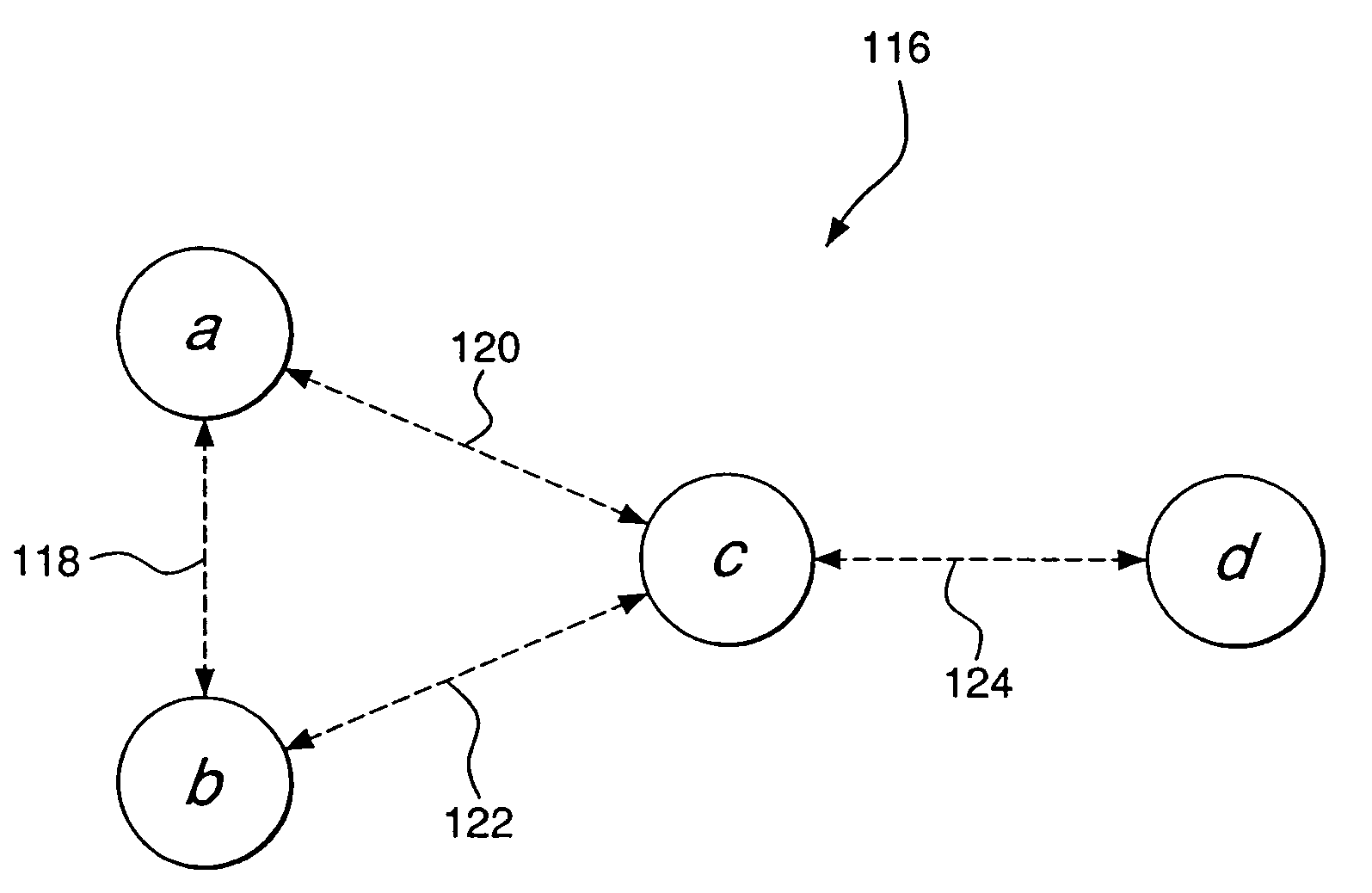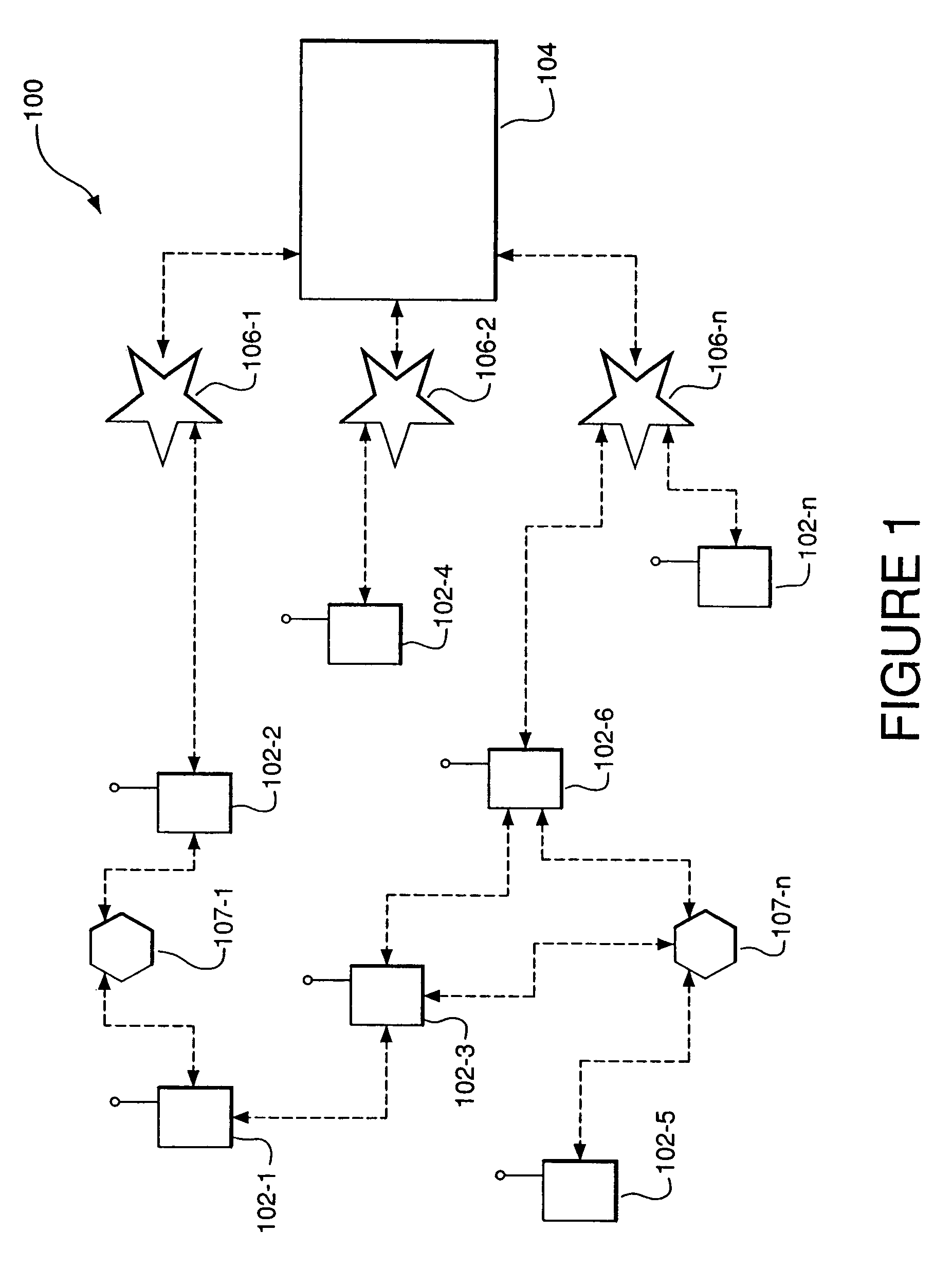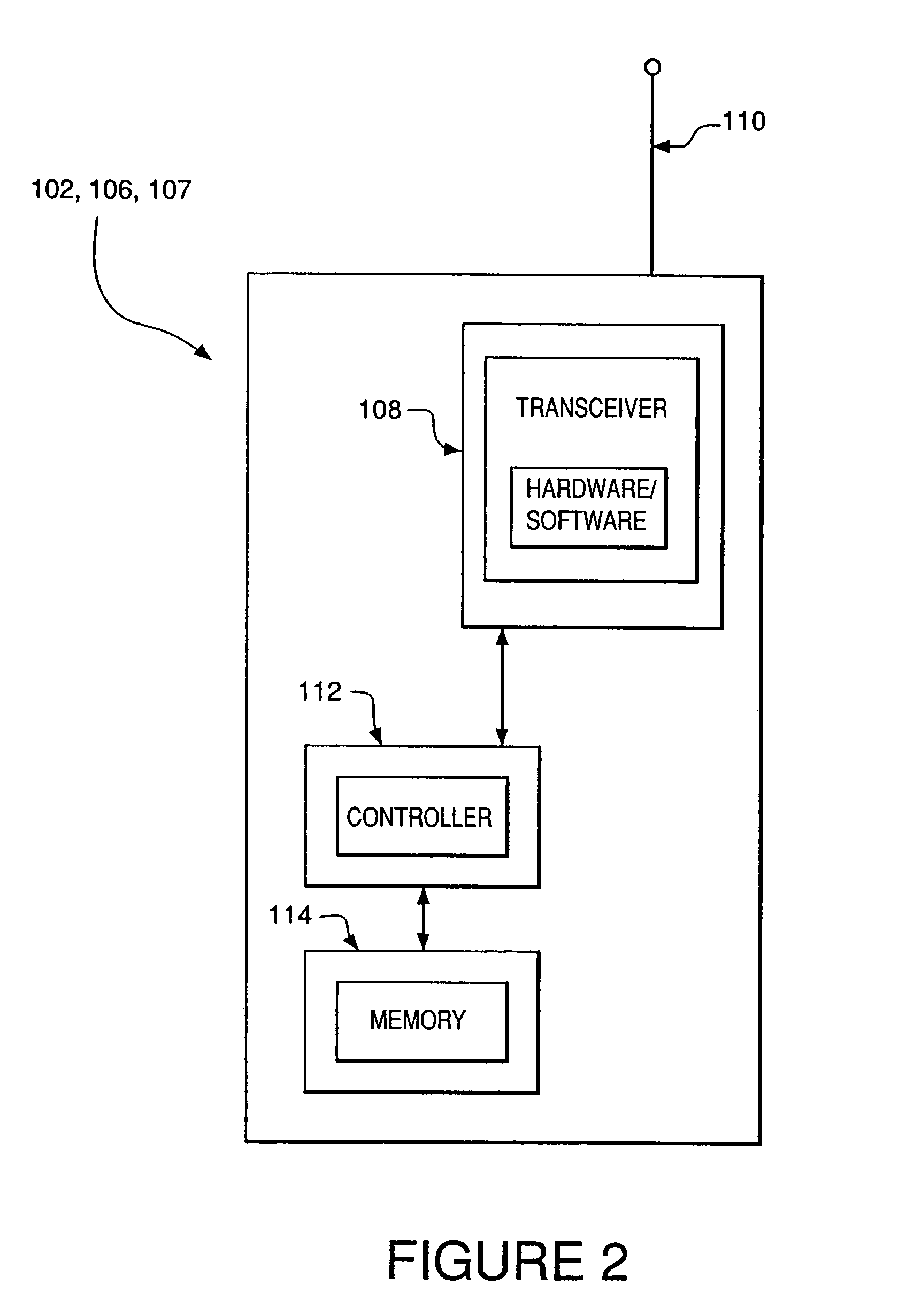System and method for identifying potential hidden node problems in multi-hop wireless ad-hoc networks for the purpose of avoiding such potentially problem nodes in route selection
a technology of hidden nodes, applied in the field of system and method for identifying potential hidden nodes in multi-hop wireless ad-hoc communication networks, can solve problems such as packet corruption, reduced packet delivery success at the intermediate node, and more severe packet corruption
- Summary
- Abstract
- Description
- Claims
- Application Information
AI Technical Summary
Benefits of technology
Problems solved by technology
Method used
Image
Examples
Embodiment Construction
[0021]FIG. 1 is a block diagram illustrating an example of an ad-hoc packet-switched wireless communications network 100 employing an embodiment of the present invention. Specifically, the network 100 includes a plurality of mobile wireless user terminals 102-1 through 102-n (referred to generally as nodes or mobile nodes 102), and a fixed network 104 having a plurality of access points 106-1, 106-2, . . . 106-n (referred to generally as nodes or access points 106), for providing the nodes 102 with access to the fixed network 104. The fixed network 104 includes, for example, a core local access network (LAN), and a plurality of servers and gateway routers, to thus provide the nodes 102 with access to other networks, such as other ad-hoc networks, the public switched telephone network (PSTN) and the Internet. The network 100 further includes a plurality of fixed routers 107-1 through 107-n (referred to generally as nodes or fixed routers 107) for routing data packets between other no...
PUM
 Login to View More
Login to View More Abstract
Description
Claims
Application Information
 Login to View More
Login to View More - R&D
- Intellectual Property
- Life Sciences
- Materials
- Tech Scout
- Unparalleled Data Quality
- Higher Quality Content
- 60% Fewer Hallucinations
Browse by: Latest US Patents, China's latest patents, Technical Efficacy Thesaurus, Application Domain, Technology Topic, Popular Technical Reports.
© 2025 PatSnap. All rights reserved.Legal|Privacy policy|Modern Slavery Act Transparency Statement|Sitemap|About US| Contact US: help@patsnap.com



